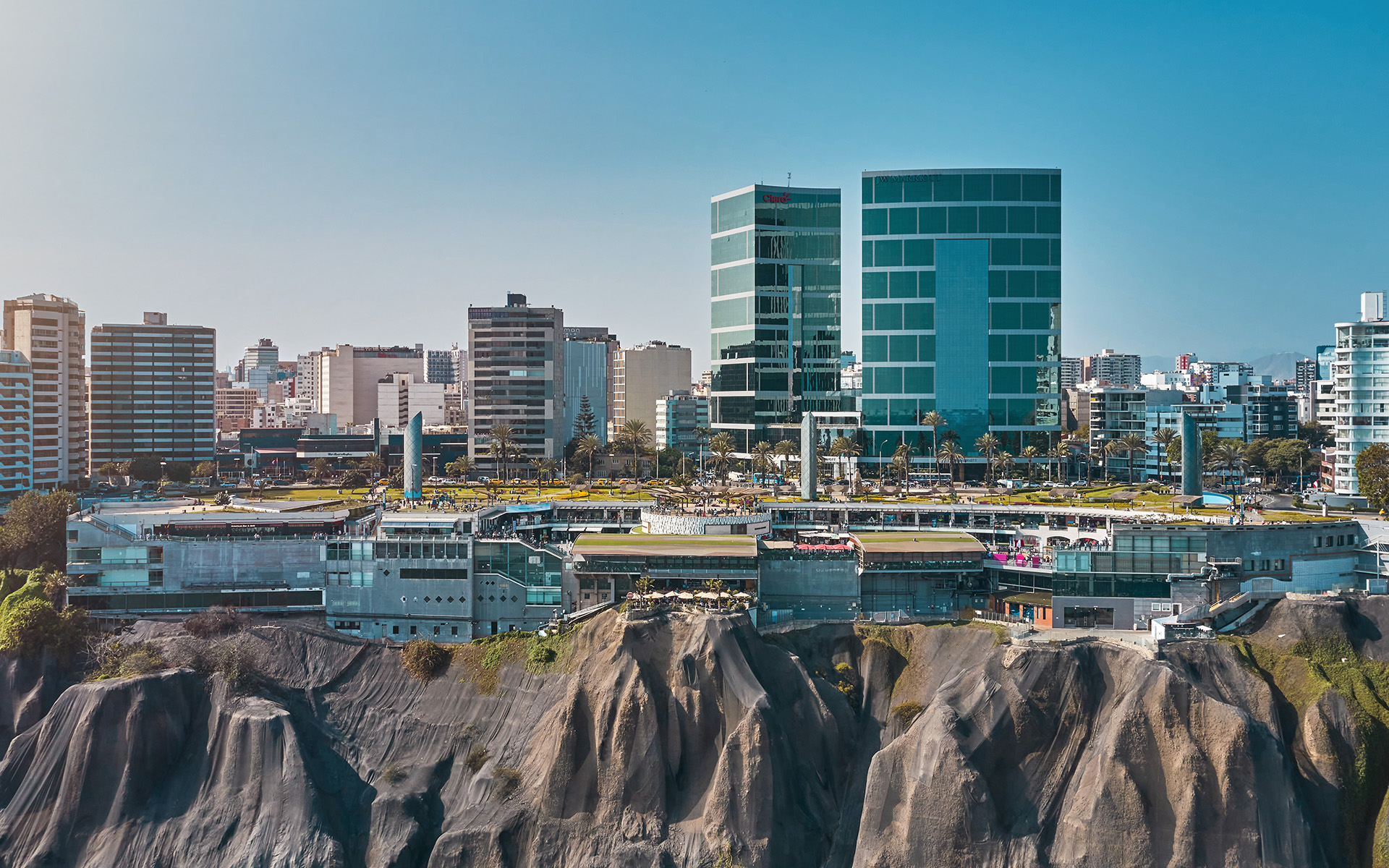A major exporter of fresh produce, the desert city of Lima is also vulnerable to heavy rains, flooding, and landslides, especially in its unplanned communities.
City Class Score
| Commercial Hubs | |
| Export Champions | |
| Mobility Connectors | |
| Climate Resilient |
Corporate HQs, MNC presence, branded outlets, hotels, manufacturing, start-up ecosystem,
transport linkages, population, and income.
Go to the class information
Manufacturing, industrial parks, export share and share change by category, air and port
infrastructure, freight time to market, trade agreements, and expert interviews.
Go to the class information
Passenger traffic, flight connectivity, air-cargo flights, port infrastructure, container
ship sailings, and major road networks.
Go to the class information
Coastal and river flooding, extreme rain, extreme heat and humidity, cyclones, and water
scarcity.
Go to the class information
The stalls in Lima’s Surquillo Market overflow with fresh fruits and vegetables,
inviting the adventurous to explore exotic delights like lucuma and cherimoya, alongside a selection
of seafood fresh from the Pacific Ocean. This abundance of produce is a key reason why Lima is
considered South America’s culinary capital. Just a stone’s throw from the market, small street
stalls dish out some of the most authentic Peruvian fare, while the city also boasts globally
acclaimed restaurants that serve up some of the world’s most exciting dining experiences.
Peru’s climate offers the perfect backdrop for agribusiness, nurturing the rich bounty found in its
bustling food markets. With a steady temperature and high-quality water sourced from the Andes
Mountains, the country has become one of South America’s largest exporters of fresh produce,
including avocados and asparagus. Yet the climate also presents challenges, particularly with the
phenomenon known as coastal El Niño. This weather pattern raises sea surface temperatures along
Peru’s coast, resulting in heavier and more prolonged rainfall, affecting the capital and beyond
with heavy flooding.
Lima, however, is not well-equipped to handle heavy downpours. As the
world’s secondlargest desert city after Cairo,
such rainfall has historically been rare. Moreover, a lack of urban planning exacerbates the
situation. Successive governments have permitted new migrants to settle in unregulated areas,
including precarious riverbeds and hillsides. When heavy rains do arrive, these informal settlements
are quick to flood, and landslides are a frequent threat. The city faced its worst floods in decades
in 2017, with over 200,000 homes destroyed. Lima suffered in 2023 from heavy rains, following the
city’s first cyclone in 40 years.
In response, the government is taking steps to bolster
resilience, investing in improvements to drainage channels and water retention basins as well as
reinforcing riverbanks. A coalition of nonprofits and public agencies has introduced electronic
sensors, including cameras and saturation detectors, to provide communities with early warnings
about landslide and flood risks. Many of these initiatives also focus on safeguarding the city’s
water supplies, which face threats during flood events. More investment and enhanced urban planning
are needed to ensure that Lima’s lowerincome communities can better withstand the impacts of coastal
El Niño.

